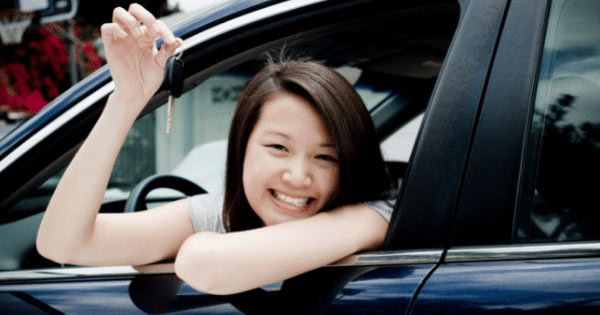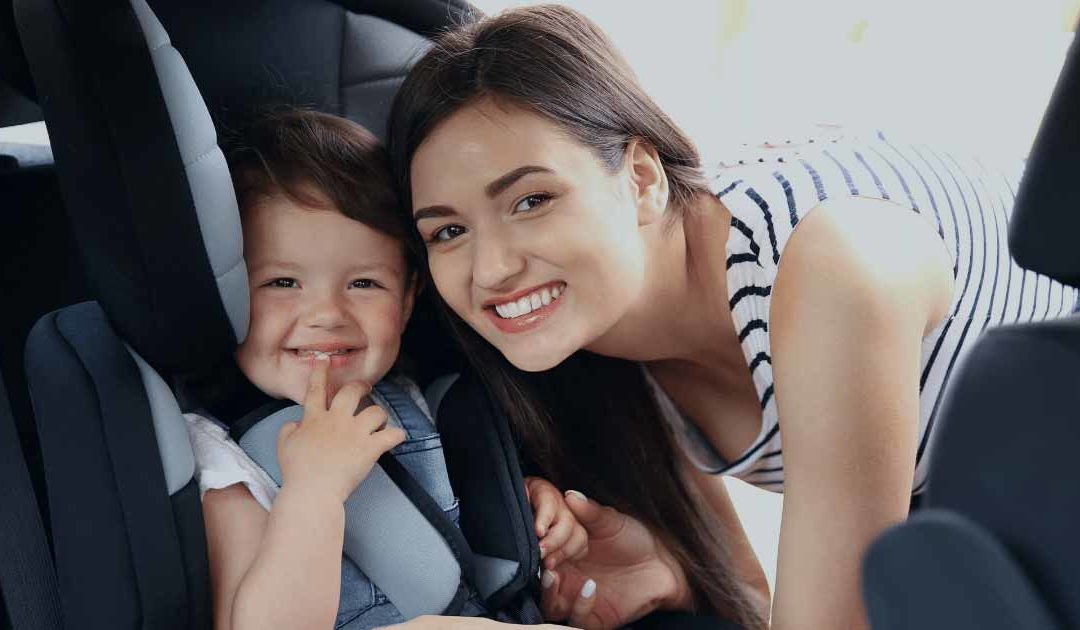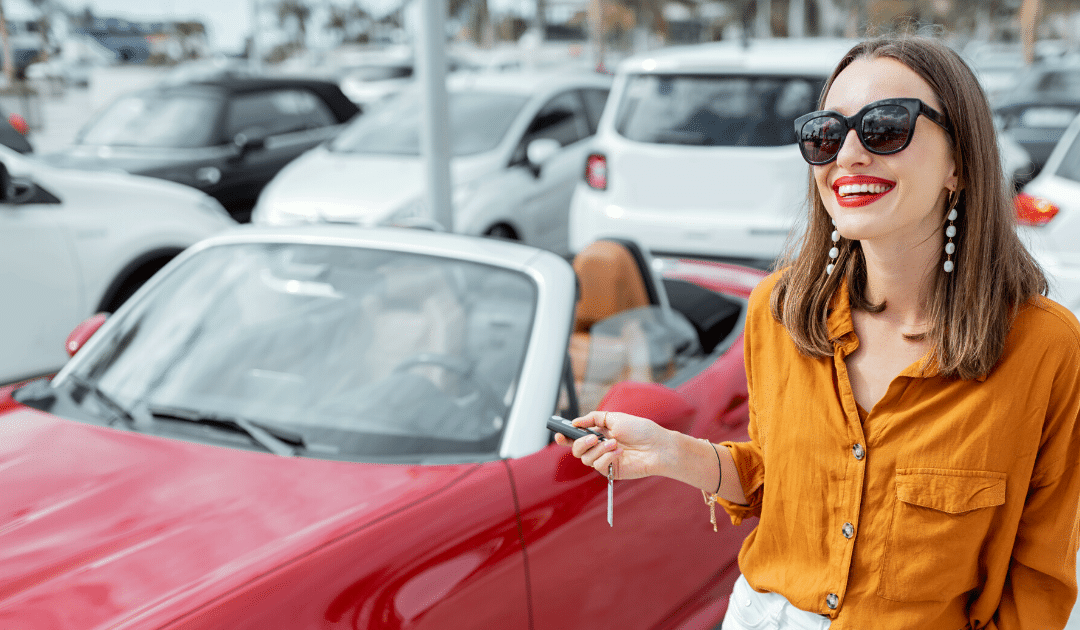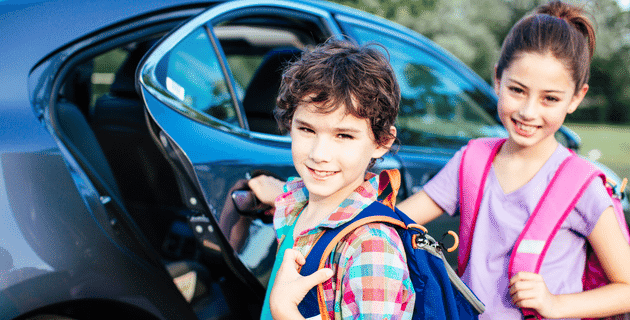
by California Casualty | Auto Insurance Info |
A new driver in the household can really impact your auto insurance rates. This is because teen drivers ages 16 -19 are more likely to be involved in accidents than any other age group. If you’re the parent of a teen who just got their license, learning how you can save on your auto insurance is a necessity.
Here are 7 ways you can control your car insurance premiums and get discounts with a teen driver.
1. Shop for coverage
Whether you stick with your current auto insurance carrier or you plan to shop around, make sure that you go with an insurance company that will quote your new driver for free and let you know upfront any benefits or discounts that you may be eligible for.
2. Enroll them in a driver safety education course
Most insurers will reward teenage drivers who complete a driver’s education or safety course with a discount. By passing the course your teen can prove they have the knowledge and skills behind the wheel to avoid an accident.
3. Take advantage of good student discounts
Good grades don’t only help your teen out in the classroom, they can also qualify for a ‘good student discount’ with your auto insurance provider. Talk to your insurance agent to see how much you can save by turning in your child’s report card.
4. Purchase a reliable vehicle with a good safety rating
We all know that the costs of our vehicles directly influence what we will pay for auto insurance. Before you go car shopping with your teen talk to your insurance agent and see how much it would be to insure a newer car vs. an older car. Don’t forget to ask about any discounts or rewards for safety ratings or features like airbags, anti-lock brakes, seatbelt alarms, and power steering.
5. Limit the miles they drive
Miles driven can also affect the cost of your insurance. This is because the longer you are on the road, the more likely you are to have an accident. So, one of the best ways to avoid a rate increase is to keep mileage to a minimum. Limit your teens driving to work, school, and only in-town functions and you may qualify for low-mileage discounts.
6. Bundle your protection and save
Instead of getting your teen their own suit insurance policy, you can save by adding them to your existing policy. And you can save even more each month with the ‘insurance bundle discount’- when you add your auto insurance policy onto other policies that you have with your carrier, like your homeowner’s insurance or renter’s insurance policy.
7. Drive SAFE!
The best way to save money (and stress) is to teach and emphasize the importance of safe driving. It will not only prevent a costly accident, but it will give you peace of mind, as a parent, that your new driver is doing everything they can to stay safe on the road.
There’s no greater value than knowing your family is properly protected.
This article is furnished by California Casualty, providing auto and home insurance to educators, law enforcement officers, firefighters, and nurses. Get a quote at 1.866.704.8614 or www.calcas.com.

by California Casualty | Safety |
Vehicle accidents are the number one cause of death for children between the ages 1 and 4. Your child’s best chance to come out of an accident unscathed is if they are in a car seat that has been installed correctly.
Here are the top car seat safety mistakes.
Price isn’t Everything, Especially when it comes to safety. When it comes to purchasing car seats, the more expensive doesn’t necessarily mean “safer”. There are car seats for every budget. A lot of that extra cost could just be additional features, easy to use, or brand popularity. Find compare and rate car seats using the NHTSA (National Highway Traffic Safety Administration) car seat finder here. So what’s the determining factor on which seat to get? Get the one that has the best rating that fits your budget, vehicle, can be properly installed and used.
Your Child is Too Big for the Seat. You bring your new bundle of joy home in the infant seat, they grow quickly, when do you move up to the next size. Sometimes it might be easy to judge if they outgrow the seat. When they pass the height or weight limits you will need to change seats to accommodate these new changes. You can check the manufacturer’s site for specifics on whether your car seat is still a good fit. Or follow this guide.
Moving to a forward-facing or booster seat too soon. The AAP policy says it’s best to keep kids rear-facing until they turn 2 or meet the maximum height and weight for the seat. Studies say that children under 2 are less likely to be severely injured (or worse) if they are riding rear-facing. Newer car seats are equipped with higher height and weight limits to help encourage rear-facing. But, just because the child meets the minimum weight requirement for a booster seat does not mean they are ready to move up. It comes down to if they can sit correctly in the seat and maintain proper belt positions at all times.
More is not merrier in this case. Do not use both LATCH (Lower Anchors and Tethers for Children) and the safety belt, use the incorrect LATCH anchors, or use a LATCH past its weight limit. What you need to use will depend on your car and the type of seat. One or the other may be the best option, but you shouldn’t need to use both. Double-check your car seat manual to make sure you’re using the correct anchors. You should also note that the lower anchors have weight limits, so you have to switch to vehicle seat belt installation if/when the weight your child + car seat exceeds 65lbs.
Used Seat = Better Deal. Expiration dates, prior accidents, cleanliness- there are all sorts of reasons why to purchase a new seat instead of buying a used one. If you are tight on money, research and see which local organizations offer inexpensive options. You’re carrying precious cargo remember, don’t skip the small stuff!
Taking kids out of car seats too soon. When does a child get to ride like a normal passenger? Great question! When the child can sit all the way back with knees bent over the edge of the seat with their seatbelt properly across the shoulder and the thighs. They need to be able to maintain this position throughout the ride, even if asleep. Check your state requirements, most require the use of a booster through age 8 or 9 (or once they hit a certain height or weight requirement).
Incorrect use of the chest clip. Don’t brush this piece off. It’s actually a crucial feature to the seat, that could end up saving your child’s life. The clip holds the straps so that if an accident happens, the straps will remain secure on the child’s shoulders, allowing full protection from the seat. A clip in the wrong spot could result in ejection, internal injuries, or even death.
Straps need to be snug. One rule to remember: if you can pinch excess strap between your fingers, or if the straps are twisted or gaping, they are too loose. The child’s clothes should never be buckled in while wearing them. You may think it adds “padding” but in an accident, it will compress and leave space that could cause injury.
Wrong harness slot. The manual for the car seat will be specific to your exact seat, but usually, placement depends on the direction the seat is facing. Rear-facing: straps should thread into harness slot at or below the shoulders. Forward-facing: straps should thread into harness slot at or above the shoulders.
It’s ONLY a car seat. Car accidents are the leading cause of death for children. Car seats save lives.
Take the time to properly install your car seat before use and have it inspected by a certified technician for assurance.
Again, your child is precious cargo, take precautionary measures now before you could regret it later.
This article is furnished by California Casualty, providing auto and home insurance to educators, law enforcement officers, firefighters, and nurses. Get a quote at 1.866.704.8614 or www.calcas.com.

by California Casualty | Safety |
Football season is finally here! If you’re anxiously getting ready to start the season with some pre-game festivities, there are a few important safety reminders you should brush up on before kickoff. Here’s how you, your friends and family can all tailgate responsibly.
Tip #1: Handle raw meat with care.
You may be known for your spicy chicken wings or beefy burgers but make sure you know the rules for handling raw meat.
-
- Before the tailgate, store meat on the lowest shelf of the refrigerator or in a meat drawer if you have it. Plan to eat or freeze it within 3 to 4 days.
- On tailgate day, store your meat in leakproof plastic bags or containers, with ice in a cooler.
- Wash your hands before and after handling raw meat.
- Wash utensils, cutting boards, and plates that come in contact with raw meat.
- Use separate cutting boards, plates, and utensils for raw meat and for produce.
- Don’t use the marinade from your raw meat on cooked meat. If you want to use it, cook it to a boil first.
Tip #2: Fire up the grill carefully.
Grilling outdoors is a favorite family activity. But injuries from burns or fires can put a real damper on family fun.
-
- Have a fire extinguisher on hand just in case. If you don’t need it, someone else might.
- Enforce a 3-foot “kid-free” zone around the grill. Never leave the grill unattended.
For propane grills:
-
- Be careful not to overfill a propane tank.
- Transport your propane tank safely, so that it is upright and secured in your vehicle.
- Check the connection between the propane tank and the fuel line to make sure there are no leaks. You can do this by making a solution of 50% liquid dish soap and 50% water, and brushing it on the hose connections. If there are leaks, you will see air bubbles when you turn on the propane.
For charcoal grills:
-
- Never add lighter fluid to an already lit fire on a charcoal grill. That can cause the fire to flare up and even ignite the chemical in the can or cause a chemical smog.
- While you can use lighter fluid to start a charcoal grill, consider using rolled-up newspaper instead. Or consider a charcoal chimney, which packs the briquettes together for easier lighting.
- Use plenty of water to douse hot coals after you’re done cooking. Give them a stir to make sure there are no lit embers.
- Do not put the wet coal and embers in plastic, paper, or wooden containers after use. They could still be hot enough to start a fire. Wait until they are completely cool and put them in a coal-safe container to transport them home.
Tip #3: More food safety to keep in mind.
A few hours out in the sun could turn a delicious dish into a potentially hazardous one. Protect your family from food poisoning by following guidelines for food safety.
-
- When grilling, use a food thermometer to check the temperature of your meat. According to gov, chicken should be cooked to an internal temperature of 165°F and ground beef to at least 160°F.
- Nonperishable foods, such as breads, chips, and cookies, can be left out but should be covered for freshness. Condiments like ketchup and mustard are also okay to sit out due to their acid content.
- Perishable foods that typically are refrigerated should not sit out for longer than 2 hours.
- When in doubt, toss it out. If you’re unsure if food is safe to eat, don’t take a chance on it. Throw it out.
Tip #4: Protect yourself from the sun and heat.
Even on a cloudy fall day, you can get sunburned or experience dehydration. Protect yourself and your family.
-
- Wear sunscreen whenever you will be outside for an extended period of time. Reapply every 2 hours.
- Wear sunglasses to protect your eyes and a hat to protect your head from UV rays.
- Find a shaded area near your tailgate to escape the sun and the heat. Or create your own shaded area with a pop-up tent or beach umbrella.
- Alcohol can dehydrate you. It causes your body to remove fluids. Drink water as much as possible and in addition to the alcohol.
- Be aware of the signs of dehydration: muscle cramps, fever/chills, dry mouth/skin, fast heartbeat, confusion, drowsiness, irritability, or a dark urine color. Drinking water is usually the best way to rehydrate.
Tip #5: Appoint a designated driver and drive safely.
Tailgates are all about having a good time, and usually involve alcohol. But drinking impairs driving with sometimes deadly results.
-
- Before you even leave, choose your DD — designated driver – the one who will remain sober. If you have a regular group of friends that tailgate together, you can rotate that duty.
- Better yet, plan to tailgate sober. You can always celebrate after the game, back at home.
- As you search for the perfect tailgate spot, watch for children and adults darting in front of your car. Do the same when you exit after the game.
- Despite your best efforts, accidents can still happen. If you are the victim of a parking lot accident, know your car insurance coverage and alert your insurer as soon as possible.
- If there’s no one who is sober and can drive home, call a cab or ride-share service. It’s far better to get home safely than endanger yourself and others.
Hosting a party instead of tailgating? No worries. Check out our hosting safety guide here.
This article is furnished by California Casualty, providing auto and home insurance to educators, law enforcement officers, firefighters, and nurses. Get a quote at 1.866.704.8614 or www.calcas.com.

by California Casualty | Auto Insurance Info |
Thinking about renting a car for your next getaway? Much like insurance, rental car contracts can seem complicated, if you don’t know what to look for. Understanding what you need and what you don’t will help you save on your rental—and use that extra savings for vacation fun.
First, let’s take a look at the basics of a rental car contract.
Age: You must be 25 or older to rent a car in the U.S. You can still rent a car if you are aged 21-24, but you will pay an extra fee. Similarly, you may need to pay a surcharge if you are age 70 and above.
Additional drivers: You may pay a fee for each driver beyond the main driver. However, rental car companies often will let spouses drive for no additional fee.
Classification of car: The daily or weekly rate depends on the type of car that you choose. Choices range from economy, the least expensive, to luxury, and more. Here’s a quick rundown of the basic sizes:
-
- Economy generally describes a small sedan with 2-4 doors and seating for 4.
- Compact is a slightly larger sedan with 4 doors and seating for up to 5.
- Intermediate/mid-size/standard are 4-door sedans that are more spacious than compacts. They seat up to 5.
- Full-size/premium cars seat 5 comfortably and have ample room for luggage.
You can also rent luxury cars, convertibles, SUVs, mini-vans, vans, and trucks. Keep in mind that the rate quoted for the car you choose is only the base rate. The actual price you pay may be more because it will include fees and surcharges.
Fees and Surcharges: You might expect to pay state and local taxes. But did you know you also may pay a surcharge to pick up/drop off your car at the airport? There’s a charge if you don’t return the car with the same level of gas. There also are charges for insurance, to protect against damage to the vehicle.
Insurance: Before you purchase rental car insurance, make sure your auto policy doesn’t already cover rental cars. Many policies do. If you’re renting a car out of the country, double-check that your auto policy covers you. For example, when traveling in Mexico, you will need a special Mexico policy.
-
- Collision Damage or Loss Damage Waiver – Optional in many states, this type of coverage pays for the rental car if it is damaged or stolen. There usually is a deductible, for which you’re responsible. If your auto policy covers collision damage, make sure that it also covers “loss of use.” For a rental company, getting a car repaired in the shop means it loses the income it could be getting from renting the car. The rental company can charge you the daily rental rate for each day the vehicle is out of service.
- Personal Accident Insurance – This optional policy covers you, the driver, in the event of an accident, including ambulance transportation and medical bills.
- Supplemental/Additional Liability Insurance – This optional policy covers the other driver and passengers whom you may injure in an accident. It also covers any property damage. You likely have liability on your own auto policy. Check to make sure the liability limit is enough. You can purchase supplemental liability insurance with the rental car company or get an umbrella policy from your current insurer.
- Personal Effects Coverage – This optional policy covers your possessions if they are damaged, lost, or stolen, something your homeowner or renter’s policy may already cover.
Mileage: Some rental contracts come with unlimited mileage. Others require that you pay for mileage beyond a certain daily limit. For example, if the daily limit is 150 miles, and you drive 160 miles, you will owe 10 additional miles at the rate charged by the company.
Now let’s see how you can save some money.
You have a lot of choices in renting a car. That gives you some control over how much you spend. Here are some ways you can keep the bill more reasonable.
1. Choose a slightly smaller vehicle. Not only will this save on the daily rate, but the car will also most likely get better fuel economy and require less gas to fill it up.
2. Book your rental car through your airline. Airlines have arrangements for discounts with rental car companies. That’s why bundling rental cars with flights and hotels can save money.
3. Book through your credit card. Credit cards can include a collision damage waiver. Just make sure you also are covered via your auto policy, as credit cards are usually tapped after your auto policy.
4. Take advantage of membership and group discounts. You may qualify for a discount if you are a member of AAA. There also are sometimes alumni or university discounts. If you rent frequently, you can get discounts via a rental car loyalty program.
5. Shop around. You might find a locally-owned rental company with a better rate. You also can find good rates on travel websites such as Kayak. If you’re using a lesser-known company, do your research with the Better Business Bureau to make sure they’re legitimate.
6. Check alternate rental locations. It may be cheaper to pick up in town than at the airport.
7. Check your own auto policy coverages so you choose only the coverages you need. Check with your insurer on other potential savings. For example, California Casualty will waive your physical damage deductible if you rent a car while on vacation.
8. Return the car on time. Be aware of the 24-hour time clock. You can be charged for extra hours or even an extra day depending on how late you are.
Renting a car can be stressful, but it doesn’t have to be. For more questions on rental car insurance or ways you can save on your own insurance policy, call a California Casualty agent today at 1.866.704.8614 or visit our website www.calcas.com.
This article is furnished by California Casualty, providing auto and home insurance to educators, law enforcement officers, firefighters, and nurses. Get a quote at 1.866.704.8614 or www.calcas.com.

by California Casualty | Educators, Safety, Travel |
Back-to-school means back to hectic schedules. Between sports, clubs, and other after-school events it feels like you are being pulled in all directions. Considering that other parents are making the same hectic trek, there’s an opportunity to lighten the load. Carpooling.
Not only can carpooling free up your schedule, but it can also help you save on gas. (Definitely a bonus!) Follow these tips to set up your carpool experience for success.
1. Find your carpool buddies.
It’s best to carpool within a trusted network of fellow parents. Don’t worry about coordinating around age or gender. The goal is to make your life easier and not simply offer car time for your child and his bestie.
That being said, start with your child’s friend group and see who might be joining the same activities. If they live nearby, that could be a match. Otherwise, ask the coach or coordinator for a parent contact list and reach out to those who live close to you. Also talk to parents at activity pickup, at school PTO meetings, or at your local religious services. Even friends of friends might be good carpool candidates.
Pro Tip: Pick the right number of kids for your carpool. Younger children need more attention and so their carpools should be smaller.
2. Set the schedule.
It’s important to make a set schedule so that kids aren’t left waiting. Using a carpool app can help you organize, and some apps even come with reminders. Some popular apps include Carpool-kids, Waze Carpool, and GoKid. You can even use Signup Genius or Google sheets. (If you use Google, you will want to download the sheets app to your smartphone.) You also can do an email or text chain.
Choose the system that works for your group and make sure everyone is comfortable with it. Also, it’s important to make sure you can communicate with other parents in the case of an emergency, accident, sickness, or unexpected change of plans. (Anyone who has forgotten an early dismissal day knows the importance of communication.)
Pro Tip: Post a copy of the carpool schedule near the door and include it in your child’s backpack. This way, he or she knows who is picking up.
3. Set expectations.
If possible, schedule an in-person meeting with your carpool participants. Not only does it make it easier to create the schedule, it helps you come to an agreement on rules and expectations. For example, how many minutes late is too late? What is the policy if you’re picking up a child who is not ready? Verify schedules and conflicts. Determine food allergies if any. Inquire about health-related concerns.
Pro Tip: Important point for discussion: Don’t let anyone outside of the carpool cover the route (e.g. babysitter, grandma) unless every parent is aware and agrees.
4. Stay safe.
Don’t forget to discuss the safety rules. For example, children must enter and exit the vehicle from the curbside. Only kids who are 13 and older may ride in the front passenger seat. Students who do not meet the necessary height and weight requirements must ride in a booster seat.
For carpools, consider harness-style options that move the seatbelt down, rather than boost the child up, such as the WhizRider. These lightweight accessories can travel with your child and fit right in their backpack for easy access for carpooling.
5. Do a practice run.
You know the route to your child’s activities but you may not be familiar with the addresses where you are dropping your carpool kids. Do a practice run with the kids. Take a trip to the local ice cream parlor or head to the library. This will help you to work out any issues before you start.
6. Bring snacks.
If you’re shuttling kids from school to after-school activities, snacks and drinks are a must. Even if you’re just taking them home, you’ll find that food and drinks help to keep them happy. Greet kids with healthy portable snacks that don’t create too much mess. Chilled water in reusable bottles make a great choice because if they’re spilled, there won’t be too much mess. Keep any food allergies in mind when selecting snacks; alternatively, you can ask parents to pack their own child’s treat.
Pro Tip: Have a cleanup pack on hand that includes paper towels and baby wipes. Put a trash bag in the backseat where the kids can put their trash.
7. Don’t forget entertainment.
Even a short car ride can be made more enjoyable when the occupants are entertained. This may include car karaoke with their favorite songs or taking turns reading aloud from a joke book. You also may want to provide games with magnetic pieces. Just make sure you have a place to store them, such as with a backseat organizer. For older kids with different musical preferences, headphones work well as they listen or watch on their devices. Finally, if you’re going to be waiting in the car, keep the things that entertain you. Bring a favorite book, a relaxing playlist, and a charger, and enjoy some much-deserved quiet time.
8. Check in with your child.
Things may be going well on your end, but you don’t know what happens when the other parents are driving. Check-in periodically with your child. Get his or her perspective on the carpool, and make adjustments as needed. It’s also a chance to determine if you need to rethink participating in a carpool.
Finally, if you’re transporting precious cargo, you’ll want to ensure that your vehicle is carpool ready. Keep your car well maintained. Protect your vehicle with the right insurance for peace of mind.
Safe travels.
This article is furnished by California Casualty, providing auto and home insurance to educators, law enforcement officers, firefighters, and nurses. Get a quote at 1.866.704.8614 or www.calcas.com.





